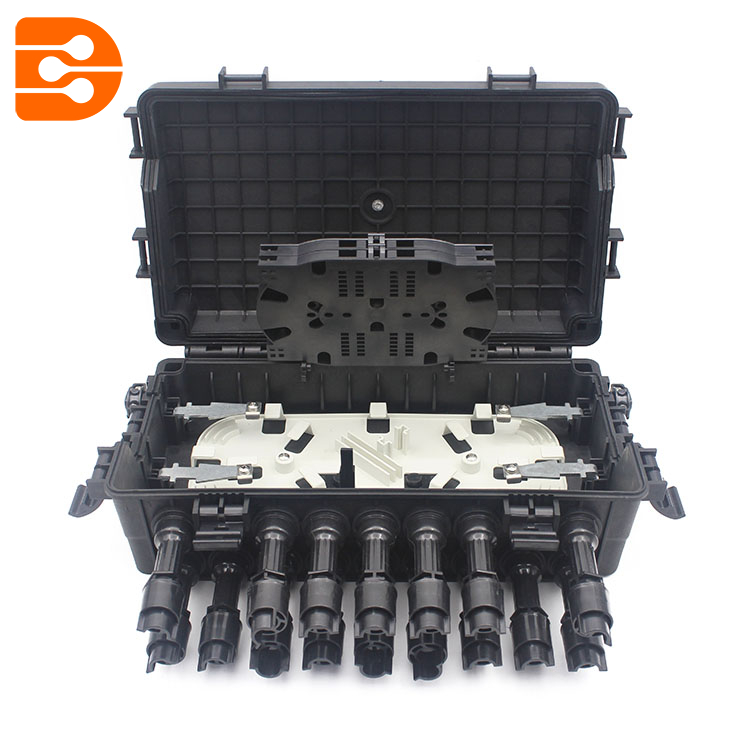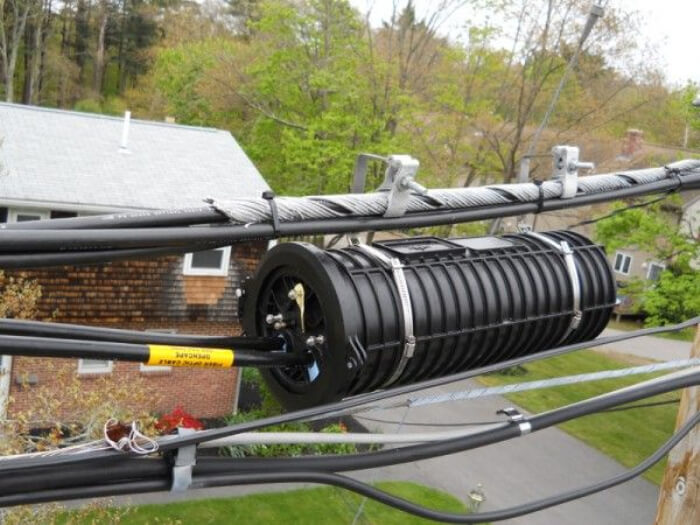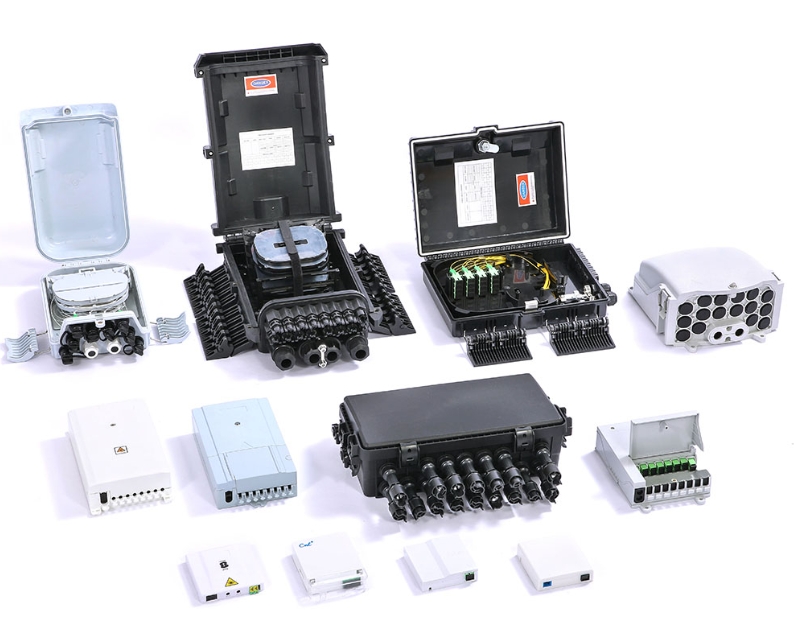Fiber optic splice closures serve as critical components in modern telecommunications infrastructure. Their role in ensuring seamless connectivity becomes even more vital with the expansion of 5G networks. The demand for advanced designs stems from the need for reliable solutions that support higher bandwidth, faster speeds, and massive device integration.
The optical fiber splice closure market is experiencing rapid growth, particularly in Asia-Pacific, with a projected CAGR exceeding 10% over the next five years. This surge highlights the importance of innovative closures like vertical splice closures, horizontal splice closures, heat shrink fiber optic closures, and mechanical fiber optic closures in meeting 5G-specific challenges.
Key Takeaways
- Fiber optic splice closures are key for 5G networks. They give high speed and strong connections for modern needs.
- New designs, like modular closures, make scaling simple. They can easily adjust for future network changes.
- Better materials and smart tech make them stronger and more reliable. This lowers repair costs and reduces service breaks.
5G Network Demands and Their Impact on Fiber Optic Splice Closures
Higher Bandwidth and Faster Speeds
The rollout of 5G networks demands unprecedented bandwidth and speed capabilities. Fiber optic splice closures play a pivotal role in meeting these requirements by accommodating high-capacity fiber counts. Modern closures are designed with modular splice trays and customizable setups, enabling efficient cable management and scalability. These features ensure that networks can handle the increased data transmission rates required for 5G applications. Additionally, advanced sealing technologies prevent leakage loss, maintaining optimal performance even under challenging environmental conditions.
Low Latency and Reliable Connectivity
Low latency is a cornerstone of 5G networks, and fiber optic splice closures contribute significantly to achieving this goal. Innovative closures now integrate real-time monitoring systems that track critical parameters such as temperature, pressure, and humidity. These systems enhance network reliability by detecting potential issues early, reducing downtime by approximately 40%. Enhanced sealing and durable materials further ensure consistent performance, even in harsh environments. Together, these advancements support the seamless connectivity that 5G networks demand.
Scalability for Massive Device Integration
The scalability of fiber optic splice closures is essential for supporting the massive device integration characteristic of 5G networks. High-capacity closures, designed for FTTH and 5G deployments, can house increasing fiber counts while maintaining proper sealing. Innovations in materials and designs have improved tensile strength and reduced insertion loss, enabling higher data transmission rates. Built-in monitoring capabilities and multiple cable entry points further enhance scalability, making these closures ideal for smart city projects and IoT applications.
Innovations in Fiber Optic Splice Closure Design
Modular Designs for Flexibility and Scalability
Modular designs have revolutionized fiber optic splice closure technology by offering unmatched flexibility and scalability. These closures feature customizable splice trays and cable entry points, enabling network operators to adapt to evolving infrastructure needs. Compact designs allow installation in confined spaces without compromising performance. High-density closures, tailored for 5G and FTTH deployments, accommodate increasing fiber counts while maintaining effective cable management. Enhanced sealing techniques, such as heat-shrink and gel-based systems, protect against moisture, dust, and extreme temperatures, ensuring long-term reliability.
Smart Technology Integration for Real-Time Monitoring
Smart technology integration has transformed fiber optic splice closures into intelligent network components. Equipped with sensors, these closures monitor environmental conditions like temperature, pressure, and humidity. Real-time data transmission enables proactive maintenance, reducing downtime by up to 40%. Network operators benefit from improved service reliability and operational efficiency. These advancements align with the demands of 5G networks, where consistent performance and minimal latency are critical.
Advanced Materials for Durability and Sustainability
The adoption of advanced materials has enhanced the durability and sustainability of fiber optic splice closures. High-density polyethylene (HDPE) and recyclable polymers improve longevity while supporting eco-friendly practices. Energy-efficient manufacturing processes, such as closed-loop systems, minimize waste and reduce production costs. Advanced sealing technologies, including mechanical gaskets and clamps, ensure closures withstand extreme conditions, reducing maintenance requirements. These innovations contribute to the long-term performance and environmental sustainability of fiber optic splice closures.
Simplified Installation for Faster Deployment
Simplified installation techniques have accelerated deployment timelines for fiber optic splice closures. Miniaturized and compact designs facilitate easier handling, reducing installation complexity. Modular closures adapt to diverse project requirements, enhancing flexibility during setup. These advancements enable faster network rollouts, meeting the urgent demands of 5G infrastructure expansion. By streamlining installation processes, operators can achieve cost savings and improve overall efficiency.
Benefits of Innovative Fiber Optic Splice Closures for 5G Networks
Enhanced Network Reliability and Uptime
Innovative fiber optic splice closures significantly enhance network reliability by reducing downtime and improving operational efficiency. Advanced designs integrate predictive maintenance features, enabling early detection of potential issues. This proactive approach minimizes service interruptions and ensures consistent performance.
Reliability Statistics:
The following table highlights the impact of improved closures on network uptime:
| Statistic | Value |
|---|---|
| Downtime Reduction | 40% |
| Impact of Predictive Maintenance | Reduced operational costs |
These closures also utilize durable materials and advanced sealing technologies to withstand harsh environmental conditions. By maintaining optimal performance in extreme scenarios, they contribute to uninterrupted connectivity, a critical requirement for 5G networks.
Improved Scalability for Future Network Growth
The scalability of fiber optic splice closures supports the rapid expansion of 5G and FTTH networks. Modular designs allow for easy scaling of fiber capacity, while smart monitoring technologies enable real-time performance tracking. These features ensure that closures can adapt to evolving network demands.
| Evidence Type | Description |
|---|---|
| Modular Designs | Facilitate easy scaling of fiber capacity. |
| Smart Monitoring Technologies | Enable real-time performance tracking and proactive maintenance. |
| Durable Materials | Withstand harsh conditions, reducing leakage loss. |
| Tool-free Access Mechanisms | Simplify fiber management, optimizing installation and maintenance. |
| Adaptation to SDN/NFV | Accommodate dynamic changes in network architecture. |
| Demand Growth | Increasing need for high-speed, low-latency connectivity due to 5G and FTTH expansion. |
These innovations make closures ideal for supporting smart city projects and IoT applications, ensuring seamless integration of new devices and technologies.
Cost-Efficiency Through Reduced Maintenance
Advanced fiber optic splice closures reduce maintenance expenses, offering long-term cost savings. Features like real-time environmental monitoring and predictive maintenance detect potential failures early, minimizing repair costs.
- Improved customer satisfaction
- Lower operating expenses
- Enhanced operational efficiency
- Reduced maintenance costs
- Decreased downtime
- Extended lifespan
Although the initial investment in these closures may be higher, the long-term savings outweigh the upfront costs. By reducing operational disruptions and extending the lifespan of network components, these closures provide a cost-effective solution for 5G infrastructure.
Future Trends in Fiber Optic Splice Closure Technology
AI Integration and Predictive Maintenance
Artificial intelligence (AI) is revolutionizing fiber optic splice closures by enabling predictive maintenance and enhancing network reliability. Built-in monitoring systems track environmental parameters such as temperature and humidity, allowing for early fault detection. This proactive approach reduces downtime by approximately 40% and minimizes unexpected failures. Smart enclosures equipped with IoT connectivity transmit real-time data, enabling operators to address issues before they escalate.
Predictive maintenance strategies also lower operational costs by reducing the need for frequent field visits. These advancements align with the growing demand for efficient and reliable 5G networks, where uninterrupted performance is critical. As AI-powered diagnostics become more sophisticated, fiber optic splice closures will play a pivotal role in optimizing network management and ensuring seamless connectivity.
Development of Ultra-Compact and Lightweight Designs
The demand for high-speed communication networks has driven the development of ultra-compact and lightweight fiber optic splice closures. These designs optimize space while increasing capacity, making them ideal for 5G and FTTH deployments. High-density closures accommodate more fibers in smaller footprints, ensuring efficient cable management in constrained environments.
Modern closures also emphasize modularity, allowing for easy installation and maintenance. Their robust construction provides protection against harsh conditions, enhancing network reliability for high-bandwidth applications. As the industry advances, miniaturized closures will continue to support the rapid expansion of next-generation networks.
Focus on Eco-Friendly and Recyclable Materials
Sustainability is becoming a key focus in fiber optic splice closure manufacturing. The use of recyclable materials, such as high-density polyethylene (HDPE), enhances durability while reducing environmental impact. Manufacturers are also exploring biodegradable options that meet performance standards without compromising eco-friendliness.
| Market Trend | Current Focus | Future Direction |
|---|---|---|
| Material Innovation | Plastic and metal enclosures | Recyclable composites and biodegradable designs |
| Environmental Responsibility | Moderate adoption of eco-friendly materials | Widespread use of sustainable solutions |
These advancements align with regulatory mandates and corporate social responsibility goals, ensuring that fiber optic technology evolves in an environmentally conscious manner. By adopting sustainable practices, the industry can meet the growing demand for green telecom infrastructure.
Fiber optic splice closures have evolved to meet the demands of 5G networks. Key innovations include environmentally friendly materials, IoT integration, and high-capacity designs.
| Key Trends and Innovations | Description |
|---|---|
| Environmentally Friendly Solutions | Manufacturers use recyclable materials to reduce environmental impact. |
| Integration with IoT and AI | Advanced enclosures support modern communication systems’ complexity. |
| High-Density Enclosures | Larger networks require enclosures with increased data-handling capacity. |
Dowell continues to lead with cutting-edge solutions, ensuring reliable and scalable fiber optic infrastructure for the future.
FAQ
What is the primary purpose of a fiber optic splice closure?
Fiber optic splice closures protect and organize spliced fiber cables. They ensure durability, prevent environmental damage, and maintain optimal network performance in 5G infrastructure.
How do modular designs benefit fiber optic splice closures?
Modular designs enhance flexibility and scalability. They allow network operators to adapt closures to evolving infrastructure needs, ensuring efficient cable management and future-proofing networks.
Are fiber optic splice closures environmentally friendly?
Many modern closures use recyclable materials like HDPE. Manufacturers also adopt sustainable practices, aligning with eco-friendly goals and reducing the environmental impact of telecom infrastructure.
Tip: Look for closures with certifications indicating sustainable materials for a greener choice.
Post time: Mar-31-2025




